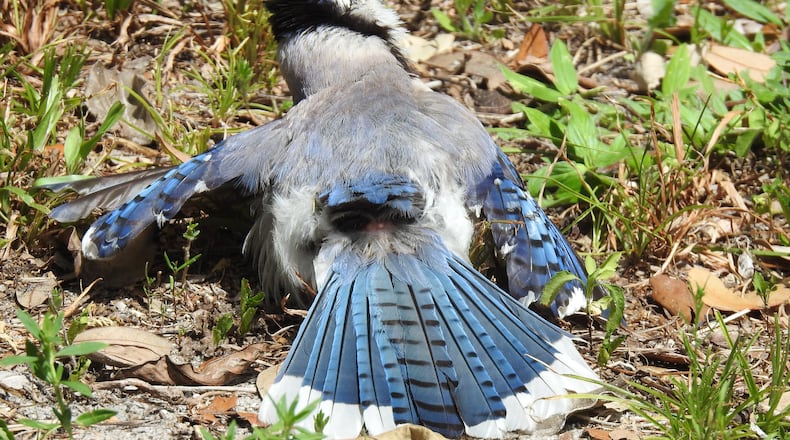Feathers are of ultimate importance to birds — crucial for flying, protection from rain, heat and cold and, during nesting season, attracting mates and defending territories.
No wonder, then, that birds pay great attention to their plumages, constantly preening — or grooming — their thousands of feathers daily to keep them clean and in good condition. Next to eating, preening is the second most important daily activity for birds. It’s why a preening bird is a common sight in our yards and elsewhere.
When preening, birds use their beaks and sometimes feet to remove dust, dirt and parasites and to spruce up feathers and properly align them for maximum flight efficiency, waterproofing and other functions. Some birds, such as crows, even groom each other.
For songbirds, a body feature essential for preening is the so-called preen gland that lies near the base of the tail. It produces an oily, waxy substance that helps waterproof feathers and keep them strong and flexible to withstand the stresses of flight. When they preen, birds spread the oil and coat it on all of their feathers.
Songbirds also use other feather-care methods, some of which may seem a bit bizarre to us.
Most birds, for instance, like a good bath — whether in water or dirt. Both water bathing and dust bathing may serve similar purposes — ridding feathers of parasites and excess oil that can cause dull plumage and sluggish flying.
Birds also may simply plop down in open spaces, spread their wings and tail feathers and soak up some rays — a process known as sunning. In addition to deterring parasites, sunning may make preen oil less viscous and easier to spread on feathers.
The strangest method, though, may be anting, in which some 200 bird species rub ants in their feathers and skin. Blue jays in particular are fond of anting. A bird may pick up ants with its beak and rub them on its body or simply sit on an anthill while preening. The process is believed to release formic acid from the ants that inhibits feather-damaging parasites on the bird.
IN THE SKY: From David Dundee, Tellus Science Museum astronomer: Summer begins at 11:32 p.m. on Sunday. The moon will be full on Thursday — the Strawberry Moon. Mars and Venus are low in the west around dusk. Jupiter and Saturn rise in the east after midnight.
Charles Seabrook can be reached at charles.seabrook@yahoo.com.
About the Author
Keep Reading
The Latest
Featured


